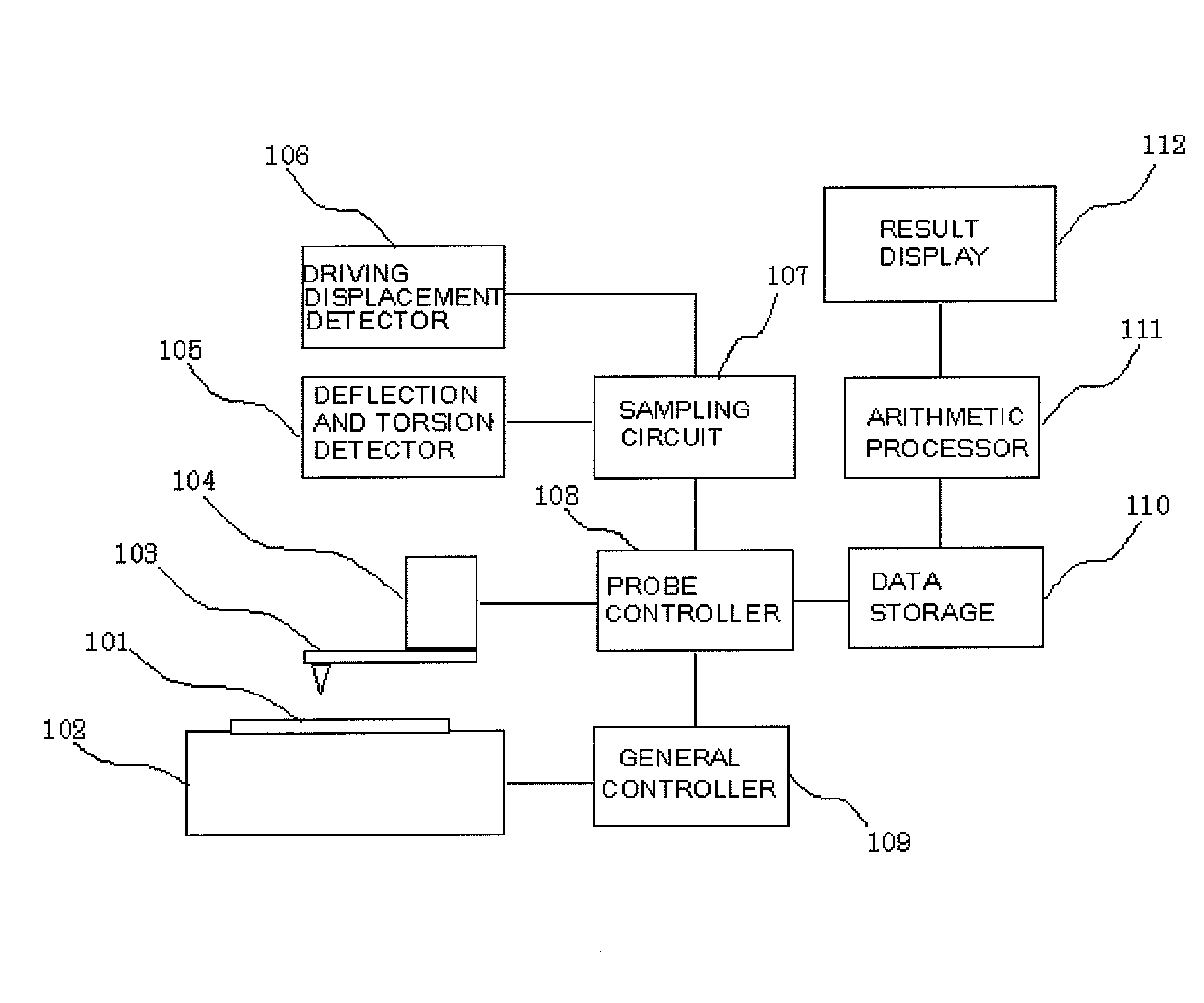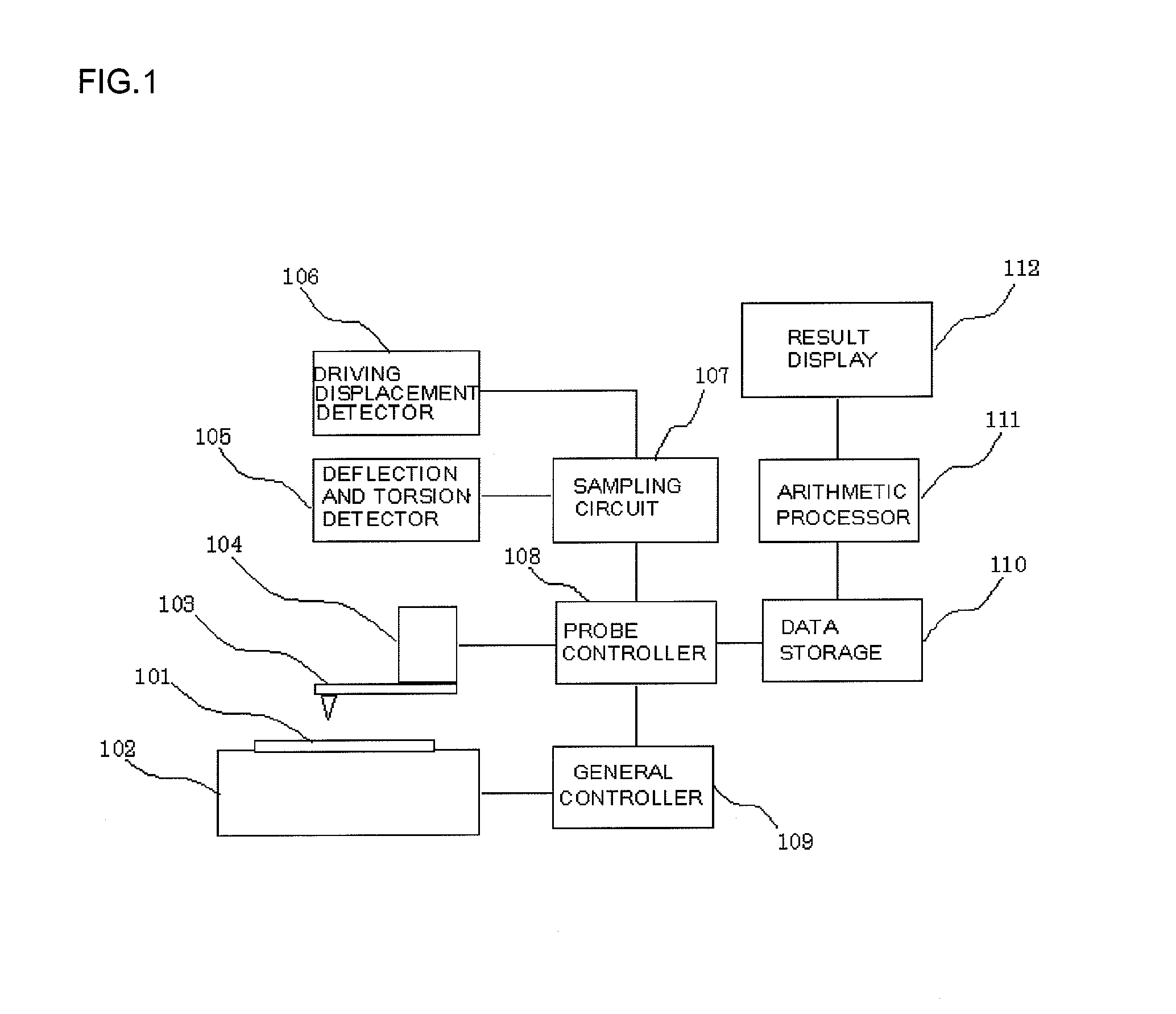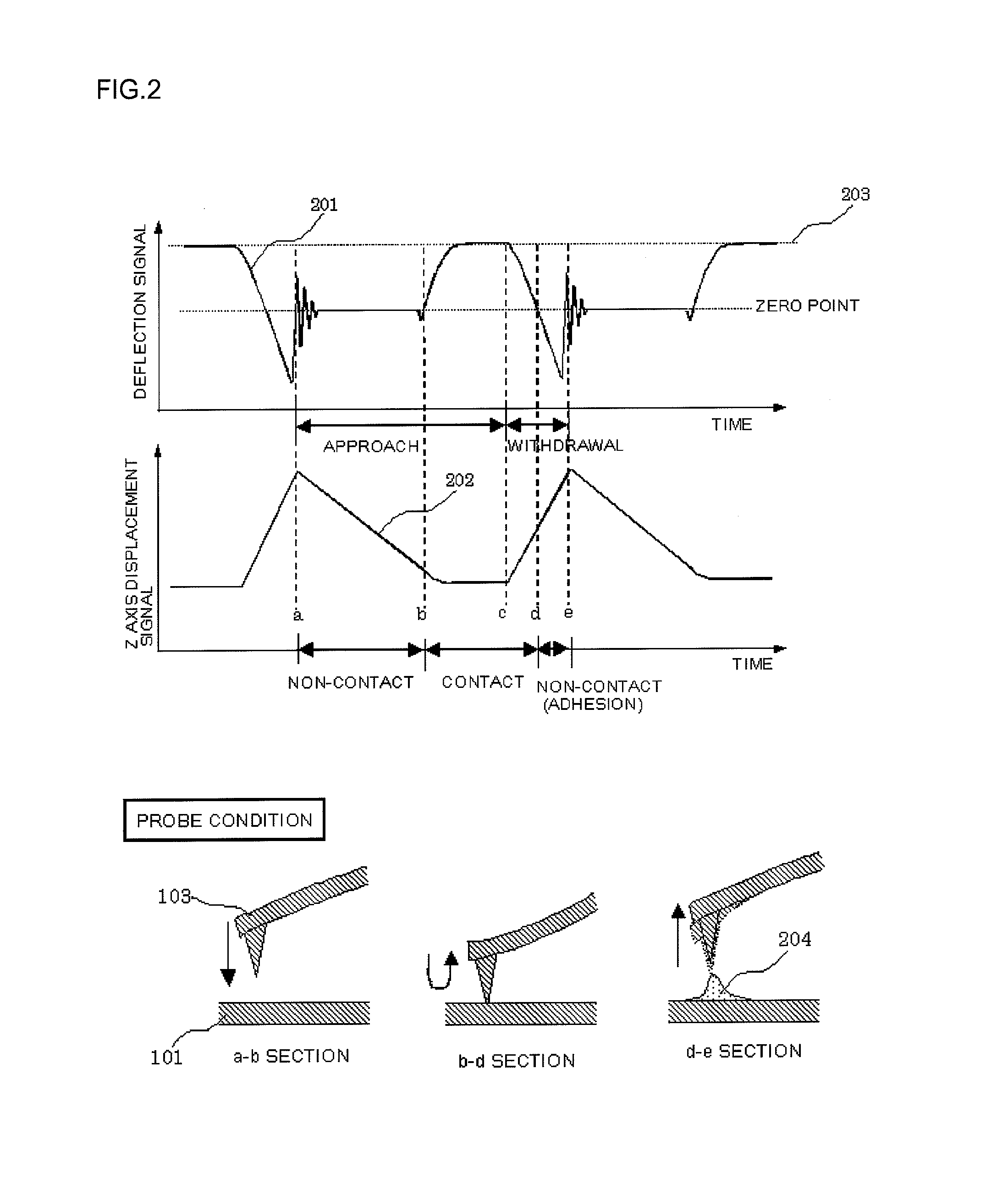Scanning Probe Microscope
- Summary
- Abstract
- Description
- Claims
- Application Information
AI Technical Summary
Benefits of technology
Problems solved by technology
Method used
Image
Examples
embodiment 1
[0035]FIG. 1 shows an example of the configuration of a scanning probe microscope in accordance with Embodiment 1 of the present invention.
[0036] The device is composed of a sample stage 102 that is movable with a measurement sample 101 placed thereon, a probe 103 that scans the sample, a probe driver 104 that drives the probe in an X direction, a Y direction, and a Z direction, a deflection and torsion detector 105 that detects the deflection and torsion of the probe, a driving displacement detector 106 that detects the driving displacement of an X axis, a Y axis, and a Z axis, a sampling circuit 107 that samples each sensor signal detected, a probe controller 108 that gives instructions to the probe driver 104, a general controller 109 that controls the sample stage, measuring sequences, and the like, a data storage 110 in which data is recorded, an arithmetic processor 111 that executes an arithmetic process and the like, and a result display 112 that displays the results of pro...
embodiment 2
[0039] With reference to FIG. 2, description will be given of a method of calculating a sample property using a scanning scheme of allowing the probe to withdraw from and approach the sample (the scheme disclosed in Japanese Patent Laid-Open Publication No. 2001-33373).
[0040] The present scheme moves the probe perpendicularly to the sample surface with the scanning of the probe completely stopped (the speed in a scanning direction is zero). This allows a force acting perpendicularly to the sample surface to be accurately detected. FIG. 2 shows a variation in each sensor signal observed when the present scheme is used. Reference numeral 201 denotes a deflection signal indicative of a variation in the deflection angle of the probe. Reference numeral 202 denotes a Z axis variation signal indicative of a variation in the displacement of the Z axis.
[0041] In an a-b section in FIG. 2, the probe is allowed to approach the sample and is not in contact with the sample. In a b-c section in ...
embodiment 3
[0070] The operation of the probe and the timing of signal sampling will be described with reference to FIG. 9. After the probe starts to approach the sample, two thresholds 301 are set for the deflection signal. When the probe comes into contact with the sample to cause the deflection signal to exceed the given threshold (901), the deflection signal and the probe displacement signal are sampled to allow elastic force to be calculated.
[0071] When the amount by which the probe is pushed into the sample reaches a preset value (the contact force between the probe and the sample reaches a given value) (902), a probe displacement signal or a Z axis driving signal is sampled in order to calculate a shape image.
[0072] To approach the sample, the probe is moved at a constant speed until it comes into contact with the sample. After the probe comes into contact with the sample, servo control is performed using contact force.
[0073] The probe may be allowed to approach the sample only by ser...
PUM
 Login to View More
Login to View More Abstract
Description
Claims
Application Information
 Login to View More
Login to View More - R&D
- Intellectual Property
- Life Sciences
- Materials
- Tech Scout
- Unparalleled Data Quality
- Higher Quality Content
- 60% Fewer Hallucinations
Browse by: Latest US Patents, China's latest patents, Technical Efficacy Thesaurus, Application Domain, Technology Topic, Popular Technical Reports.
© 2025 PatSnap. All rights reserved.Legal|Privacy policy|Modern Slavery Act Transparency Statement|Sitemap|About US| Contact US: help@patsnap.com



